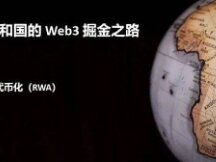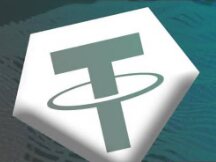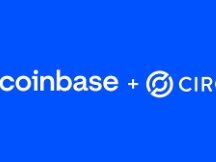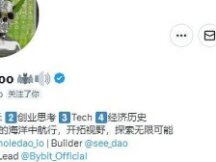Blockchain Won't Work, Web 3.0 Won't Work
The Internet's utopian vision continued into the 1990s, and as Bill Gates wrote in his 1996 phrase “the Internet will improve justice”, open data and communication could easily “make the public competitive”. "Web 2.0, now the Internet, has expanded access to information and changed everything in the community, I believe everyone has a deeper understanding.
However, while Web 2.0 is a step towards vulnerability, it still faces many limitations, from data mining to data security threats. The intellectual and technological advance of Web 3.0 will make the Internet as we know it personally and intelligently. But it rarely starts. Blockchain is a necessary addition to Web 3.0 to promise real impact on the Internet.
When we talk about Web 3.0, we have to make room for the blockchain.
In a 2001 article, Tim Berners-Lee, inventor of the first World Wide Web, called for the future of the Internet's Semantic Web and noted that machines could be “able” and better understand data. And that's just the data that's currently stored and published.

Tim Berners-Lee is a British researcher, founder of the World Wide Web, and professor at the University of Southampton and the Massachusetts Institute of Technology. On December 25, 1990, with him at CERN, Robert Cario made the first communication between an HTTP proxy and a server on the Internet.
About ten years later, the Semantic Web was integrated into Web 3.0. Indeed, one of the key features of Web 3.0 is its ability to create data block connections.
The collaboration managed by today's technology companies is responsible for linking web pages and sharing information between users. It's too early to know what Web 3.0 will look like. However, it is true that it will provide intellectual property, natural language research and technology education. Therefore, Web 3.0 provides textual and visual information to provide users with valuable and useful information.
More and more people in the tech community are realizing that Web 3.0 really needs a blockchain platform. Blockchain technology can enable the acquisition and distribution of data. Blockchain-based Web3.0 removes analytics and uses ads based on personal data. In return, there will be more free communication between people without being "watched" by technology companies.
Explore the heart of the blockchain
A blockchain is a file containing a list of data exchanges, which are distributed by each participant in the digital network. Each record contains the time and information related to each previous modification. Cryptocurrency has affected the understanding of blockchain by many people, but the industry has gradually started to embrace blockchain technology.
According to Deloitte's Global Blockchain Survey 2020, 39% of executives and professionals have integrated blockchain into manufacturing, up from 23% in 2019.
The blockchain is a data storage system and the smart contract is a data storage service. Smart contracts are at the heart of blockchains because rule lines contain the terms of the contract between buyer and seller. Codes and protocols are contained in a decentralized blockchain network. By using smart contracts on the blockchain, marketing is traceable, transparent and irreversible. Smart contracts allow people to exchange money, goods, assets, and other valuables without intermediaries.
The blockchain solves the problems posed by Web 3.0.
According to a Statista report in April, Amazon now controls a third of cloud activity on the internet. According to a StatCounter report in June, Google's share of the global search engine market is just over 92%. Web 2.0 is giving tech companies the skills they need to transform the way consumers communicate online. But we are a long way from a user-centric Internet.
With blockchain technology, there is no middleman to manage data.Therefore, no one has the right to block websites and services. Instead, the data is transferred from the central server to a peer-to-peer (P2P) network. As a result, anyone who needs a number can contribute, the number is public and everyone has the same information. Web3.0 allows users to take back control of their data and experience real internet usage.
In Web 3.0, the blockchain decentralizes and distributes data. As a result, criminal records will be reduced. Businesses running the application on the modern Web 2.0 store user data on servers and databases. Even if a company decides not to sell user data to third parties, hackers can still attack servers and databases. Sensitive data is therefore dangerous. In Web 3.0, the Security Data Collection and Distribution protocol collects user data. This makes it more difficult for hackers to control the entire network.
The Internet of Things (IoT) is at the heart of Web 3.0, allowing multiple devices to connect to each other. It's easy, but also dangerous. Procedures to protect the privacy and distribution of data stored on blockchain technology will bring security and privacy to the Internet of Things. Of course, all devices communicating with each other must be on the same blockchain. This causes intermittent problems.
Why Web 3.0 Needs Blockchain Interoperability
Interoperability is the ability to access and access information across multiple blockchain systems and is an integral part of Web 3.0 development.
Many organizations are currently developing the best solutions for blockchain interoperability. Interoperability is a support for a wide range of business applications by improving scalability and flexibility. In other words, interoperability is the key to the multiple uses of blockchain.
While Web 3.0 is expected to transform the entire user experience and focus on data connectivity, it will be the blockchain platform that will make Web 3.0 unique. Web 3.0 provides a view of real-world internet access enabled by blockchain and smart contracts that provide the ability to transfer valuable data without disruption.
Blockchain makes it difficult for hackers to control the network. However, for blockchains to truly replace Web 3.0, they need to be able to connect to another blockchain in the network, which means they need to be integrated. Once done, we can finally make an impact on the Internet.

Scan QR code with WeChat






























